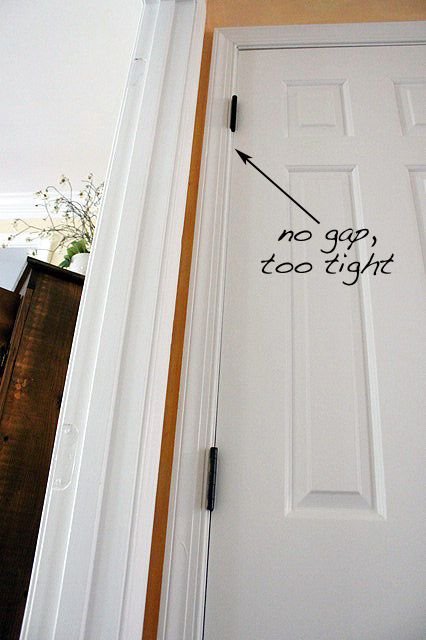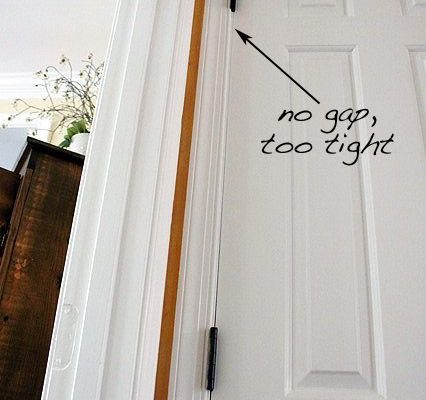
Just like any other piece of furniture or equipment in your home, doors sometimes need a little TLC beyond the usual adjustments and hardware fixes. Whether it’s a pesky shift in the structure around it or environmental factors at play, there’s often more to the story. Here’s the thing: a little detective work can go a long way in helping you troubleshoot those general door sticking issues and get things back on track.
Understanding Door Movement and House Settling
When you think about your house—the walls, the roof, and everything in between—they’re all moving (albeit slowly). As your home settles into its foundation, it can affect those trusty doors. Can you imagine a ship slowly drifting in the water? Houses experience a similar effect, shifting here and there over time. This can lead to doors that might not fit their frames like they once did.
If you notice that a door sticks more during certain seasons, this could be due to natural changes in humidity. Think about it: wood expands in the summer when it’s hot and humid, and contracts in the winter when the air is dry. This fluctuation can lead to doors being snug in their frames. So, if your door is grating on your nerves, it might not be a hardware issue at all—it could just be the timing of the seasons.
Identifying the Problem
To figure out whether your door sticking issue stems from settling or weather changes, visually inspect the door and its frame. Here are a few steps to help you identify the problem:
- Look for gaps or uneven spaces between the door and the frame.
- Check if the door is warped by placing a level against the door’s surface.
- Pay attention to whether the door is sticking on the top, bottom, or side.
Each detail can help point you in the right direction, so take your time with this inspection.
Environmental Factors and Humidity
Speaking of seasons, let’s dig deeper into how humidity can play a part in your door’s performance. If you’ve ever experienced a hot summer or a rainy season, you probably know what I mean when I say that doors can feel different.
Humidity affects wooden doors significantly. When a humid day rolls in, wood absorbs moisture and swells, leading to a tight fit in the frame. That’s like trying to squeeze into your favorite pair of jeans after a big meal—sometimes, it just won’t budge!
How to Manage Humidity Effects
If humidity is the culprit behind your door sticking, there are a few simple strategies you can try to alleviate the issue:
- Use a dehumidifier to reduce moisture levels in the air—this works wonders!
- Apply a furniture polish or wax to the door edges for added protection against moisture.
- Keep windows open when possible for airflow, especially on days where the weather is stable.
These tips can help your door maintain its shape and fit properly, regardless of the changing seasons.
Thermal Expansion and Contraction
Now, let’s talk about temperature. Just as humidity can alter the shape of a door, drastic temperature changes can do the same. It’s akin to a rubber band stretching and shrinking; heat causes materials to expand, while cold causes them to contract.
If your door sticks more during winter, it might be due to the wooden frame contracting and causing friction. Conversely, a scorching summer could make the door swell slightly, resulting in the same sticky situation.
Addressing Thermal Changes
If you suspect thermal expansion or contraction is the issue, consider the following options to relieve the pressure:
- Adjust the door hinges slightly if you notice the door catching at the top or bottom.
- Inspect seals and weather-stripping to ensure they’re not adding to the problem.
- Consider installing a door sweep to help prevent heat loss and reduce stickiness.
Sometimes, these small adjustments can make a big difference without needing to overhaul the entire door!
Improper Door Installation
Have you recently moved into a new house or renovated? If your door didn’t fit properly from the get-go, it might give you persistent trouble. A poorly installed door can lead to issues that seem like they’re beyond your control.
When a door frame isn’t square, you might end up with gaps that cause sticking. It’s like trying to fit a square peg into a round hole, and nobody wants that kind of struggle every time they walk through their home.
Evaluating Installation Issues
To figure out whether improper installation is the issue, check for these signs:
- Look for gaps between the frame and the door—it shouldn’t be uneven.
- Use a level to see if the door hangs straight.
- Inspect the hinges to ensure they are aligned correctly.
If you find that installation is indeed the culprit, it might be worth contacting a professional for an evaluation.
Seasonal Changes and Load on Structure
In addition to humidity and temperature, seasonal changes can put a load on your house’s structure. Picture a building that has stood for years—there’s bound to be some wear and tear over time.
During winter, snow accumulation or heavy rain can lead to shifts in your home’s foundation. As your house settles and adjusts to these weight changes, it can result in doors sticking more frequently.
What to Do About Seasonal Load Changes
To manage this issue, consider these solutions:
- Clear out gutters to prevent water damage that could worsen structural issues.
- Keep an eye on your foundation and look for signs of cracks or movement.
- Consult a professional if you suspect that structural changes are affecting your doors.
Taking action on these concerns can save you a headache down the road.
Final Thoughts on Troubleshooting Door Sticking Issues
Navigating door sticking issues can feel like a puzzle, but it’s often solvable with a little patience and understanding. By considering factors like settling, humidity, temperature changes, improper installation, and seasonal shifts, you can pinpoint the root cause.
Rather than immediately reaching for a hammer and nails, take the time to observe your doors and their surroundings. With a bit of detective work, you can address these sticky situations without unnecessary stress. After all, a smoothly operating door is just one more way to keep your home running harmoniously!
